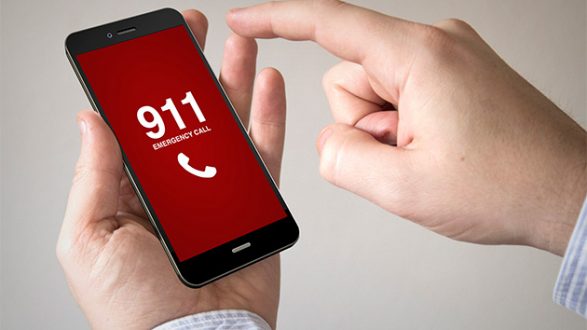
 iStock/Thinkstock(NEW YORK) — As a deadly terrorist attack was unfolding on London Bridge and at Borough Market on Saturday night, London’s Metropolitan Police tweeted to the public: run, hide, tell.
iStock/Thinkstock(NEW YORK) — As a deadly terrorist attack was unfolding on London Bridge and at Borough Market on Saturday night, London’s Metropolitan Police tweeted to the public: run, hide, tell.
ABC News contributor John Cohen, a law enforcement and homeland security expert whose roles have included counterterrorism coordinator for the Department of Homeland Security, says the “run, hide, tell” advice from London police is similar to what U.S. authorities advise the American public to do, which is: run, hide and fight.
It’s the combination that is key, Cohen said: run, hide, fight and report.
It’s important for the public to understand these guidelines because, Cohen says, there’s now “a new normal,” which is “the potential that terrorists or other people may carry out attacks on so-called soft targets,” where the public is vulnerable, like this weekend’s attack in London.
On Saturday night, assailants used a vehicle to plow into pedestrians on London Bridge and then drove to Borough Market, where people were attacked with knives, police said. Three suspects were shot and killed in the wake of the carnage and all were wearing fake suicide belts, police said. It was eight minutes from the moment police were notified about the attack to when the three men were killed, police said. Seven people were killed and dozens more were injured in what United Kingdom Prime Minister Theresa May called a “brutal terrorist attack.”
What London police instructed people to do Saturday was: “RUN – to a place of safety. This is a better option than to surrender or negotiation. If there’s nowhere to go, then … HIDE – Turn your phone to silence and turn off vibrate. Barricade yourself in if you can. TELL – the police by calling 999 when it is safe to do so.”
If you find yourself in in the area of an attack, here’s what you can do to stay safe, according to Cohen.
Be vigilant
“Be vigilant, but don’t be afraid,” Cohen said. “When you go into a public space, be aware of your surroundings. Observe what’s going on around you. If you see something suspicious immediately notify law enforcement.”
Cohen says examples of suspicious activity include: cars parked in unusual places, unusual behavior, unusual packages or bags and clothing that stands out. (Attackers may wear baggy clothes even on a hot day, Cohen explained, so they can more easily conceal a weapon.)
The public doesn’t need to make a determination whether the activity actually is suspicious or not, Cohen added — instead the public should call police and let the authorities make that determination, he said.
Run
In the event of an attack, Cohen said, “Your first consideration is run — get out of the area as quickly as you can.”
Hide
“If you can’t leave the area, find a place to hide. Preferably a place that you can barricade yourself in — a place that provides not just concealment but provides protection.”
Fight
“If you have no other alternative and you’re in harm’s way, be prepared to fight,” Cohen said. “Pick up any type of item you can use as a weapon,” like a pole or a rock, he said.
Report
Also, Cohen said, “If you have the opportunity contact law enforcement … let them know what you’re observing.”
Planning ahead
With the increased prevalence of attacks on soft targets — like this weekend in London and the Manchester, England, concert attack that killed 22 in May — Cohen says another important element to add to the “run, hide, fight, report” process is planning ahead.
“While people certainly shouldn’t change their lifestyle and be afraid,” Cohen said, it’s important to be vigilant and think like police officers. He said police are taught to continuously think through what they would do if confronted with a certain situation, so members of the public should also be prepared in that way to a lesser extent.
For example, be aware of the exits are when you’re going to a sports stadium and think through what your plan would be if confronted with a dangerous situation there, Cohen said. “Going through that process starts preparing your brain and minimizes the potential that you’ll freeze,” he explained.
Copyright © 2017, ABC Radio. All rights reserved.










